A Historical Timeline of the Civil War (1861-1865)
The Civil War was one of the bloodiest and most significant wars in American history. At Gettysburg Flag Works, we honor this legacy by offering a diverse collection of historical military flags, allowing enthusiasts and historians to own a piece of this rich past. This timeline outlines key events from secession to surrender.
Lincoln Wins the Presidency
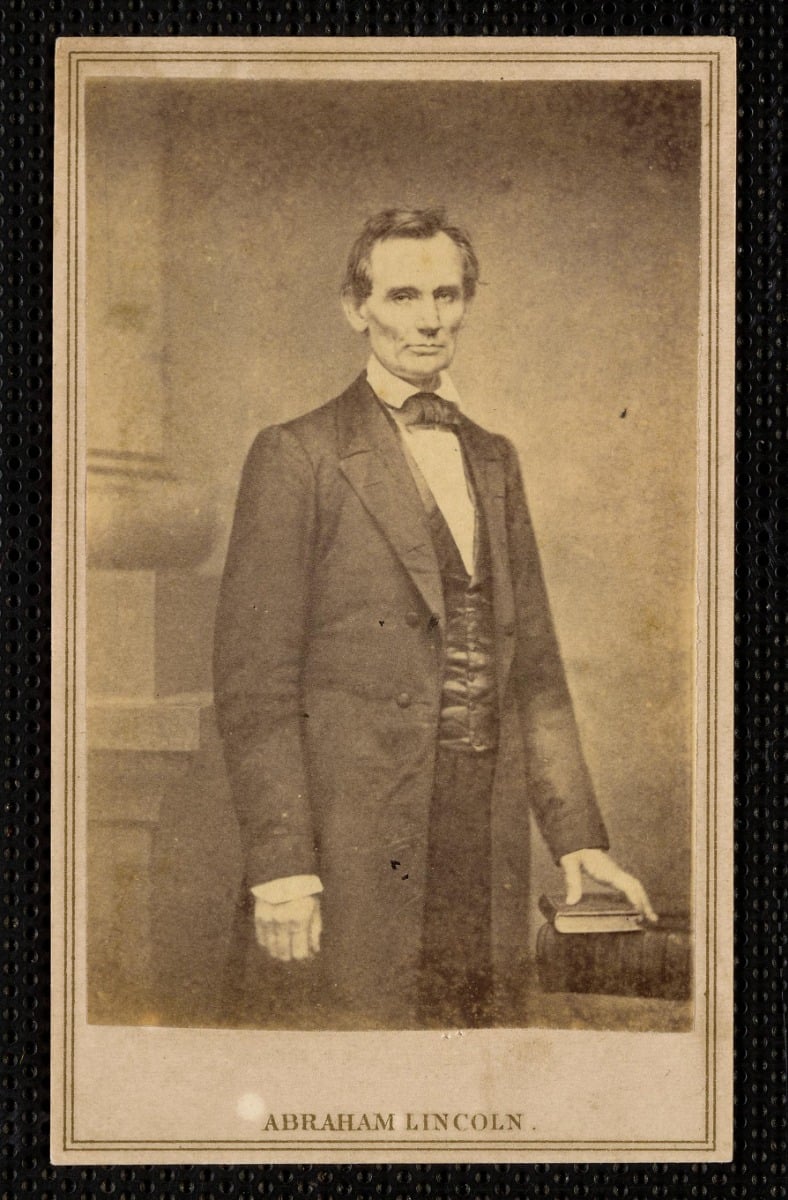
Abraham Lincoln's victory in the presidential election of 1860 sent shockwaves through the Southern states. Running as the first Republican president on a platform opposing the expansion of slavery, Lincoln won without carrying a single Southern state. His election signaled to Southern leaders that their political influence was diminishing, fueling fears that slavery would eventually be abolished. This deepening divide between North and South set the stage for secession and war.
The Union flag evolved throughout the Civil War as new states joined the Union, with the 34-star flag becoming the most recognized symbol on the battle field.
South Carolina Secedes
Less than two months after Lincoln’s election, South Carolina became the first state to secede from the Union. The state’s leaders saw secession as the only option to preserve their way of life, which was deeply intertwined with slavery. In a formal declaration, they cited Northern hostility toward slavery as a primary reason for their departure. This bold move set a precedent that other Southern states would soon follow.
The Bonnie Blue Flag, became an early symbol of Southern independence which was influenced by South Carolina's leading charge!
The Confederacy Forms
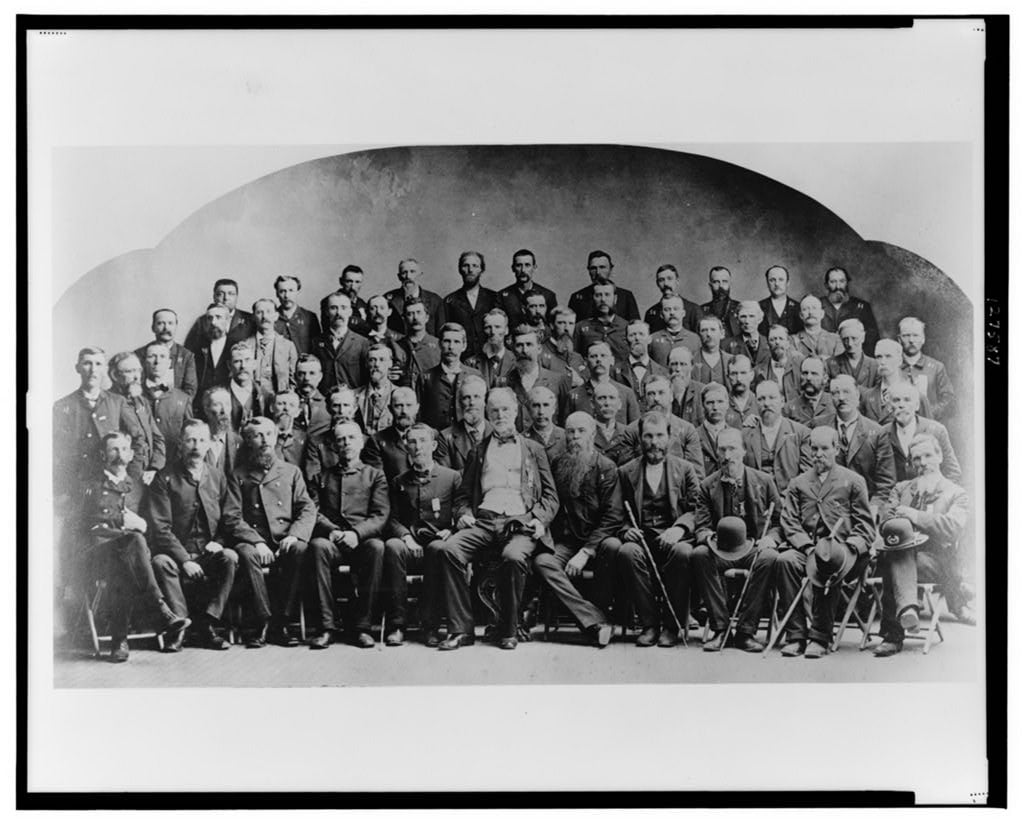
Between January and February 1861, Mississippi, Florida, Alabama, Georgia, Louisiana, and Texas followed South Carolina’s lead and seceded from the Union. These states convened in Montgomery, Alabama, to establish the Confederate States of America. On February 9, Jefferson Davis, a former U.S. senator and secretary of war, was elected as the Confederacy’s first and only president. His leadership would be tested as tensions escalated toward open conflict.
The Confederate First National Flag, was the first official flag of the Confederacy at this time.
The Civil War Begins at Fort Sumter
At 4:30 a.m., Confederate forces under General P.G.T. Beauregard opened fire on Fort Sumter, a Union-held fort in Charleston Harbor. The relentless bombardment lasted for 34 hours before the Union garrison surrendered. Though no one died in the battle itself, the attack marked the official start of the Civil War. In response, Lincoln called for 75,000 volunteers to suppress the rebellion, prompting more Southern states to secede.
The Birth of West Virginia
Virginia's decision to join the Confederacy in April 1861 was not universally supported. Many western Virginians, who had economic and cultural ties to the North, opposed secession. This division led to the formation of West Virginia, which was admitted to the Union as a separate state in 1863. It was a rare instance of a new state being created as a direct result of the Civil War.
First Battle of Bull Run (Manassas)
The first major battle of the war took place near Manassas, Virginia, where Union troops under General Irvin McDowell clashed with Confederate forces. Initially, Union forces appeared to have the upper hand, but a determined Confederate counterattack—bolstered by General Thomas “Stonewall” Jackson’s stand—turned the tide. The stunning Confederate victory shattered the North’s hopes for a short war and forced Lincoln to rethink his military strategy.
November, 1861 - A Month of Key Developments
November was a pivotal month for the Union war effort. Union forces secured an important naval victory at Port Royal, South Carolina, tightening the blockade of Southern ports. Meanwhile, the Trent Affair nearly dragged the Union into war with Britain when a U.S. ship intercepted a British vessel carrying Confederate diplomats. Lincoln wisely de-escalated the crisis by releasing the diplomats. In a major military shake-up, George B. McClellan replaced Winfield Scott as General-in-Chief, a move that would shape Union strategy in the coming months.
Lincoln’s Frustration with McClellan
Lincoln issued General War Order No. 1, calling for a unified Union offensive to begin on February 22—George Washington’s birthday. However, McClellan, known for his caution, ignored the order, frustrating Lincoln and delaying crucial Union offensives. His hesitation would become a defining trait, contributing to later battlefield failures.
Grant's First Major Victories
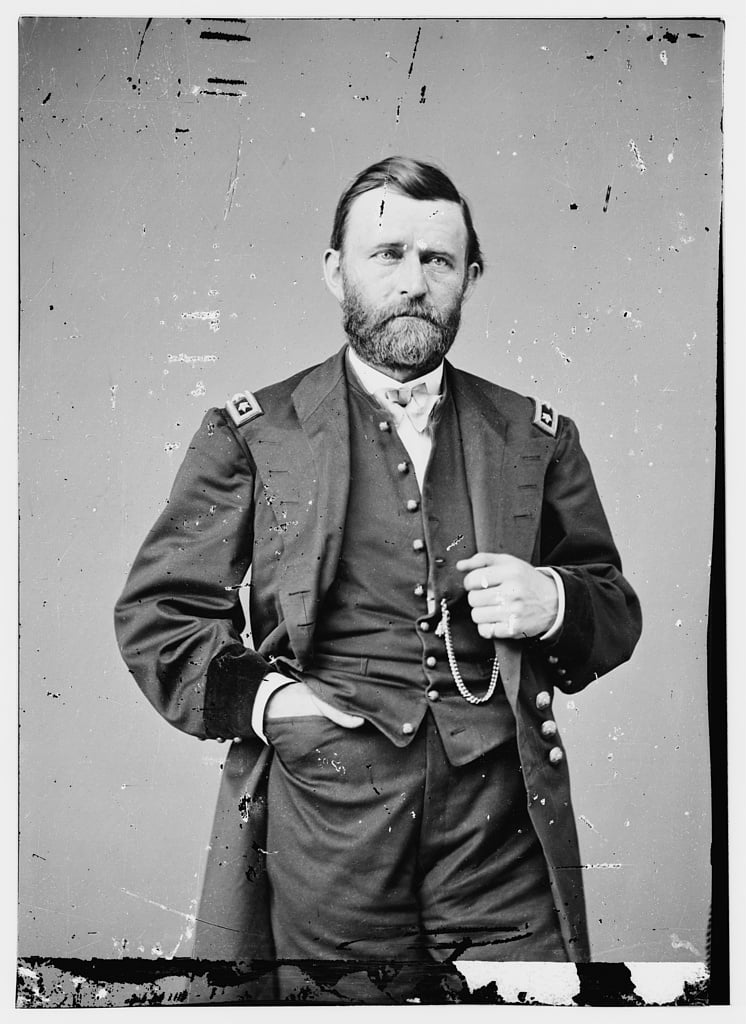
Union General Ulysses S. Grant launched his Western Theater campaign by capturing Fort Henry on February 6, followed by Fort Donelson on February 16. These victories secured key waterways in Tennessee and forced thousands of Confederate troops to surrender. When asked for terms at Fort Donelson, Grant famously replied, “No terms except unconditional and immediate surrender,” earning him the nickname “Unconditional Surrender” Grant.
The Ironclads Clash
The Battle of Hampton Roads on March 9 saw the historic engagement between two ironclad warships—the USS Monitor and the CSS Virginia (formerly the Merrimac). Their clash marked the end of wooden naval warfare, as both ships proved nearly impervious to traditional cannon fire. Though the battle ended in a draw, it revolutionized naval combat forever.
The Battle of Shiloh
The bloodiest battle of the war so far unfolded in southwestern Tennessee, where Confederate forces launched a surprise attack on Grant’s army near Shiloh Church. Grant, caught off guard, was nearly defeated on the first day. However, reinforcements arrived overnight, and a Union counterattack on April 7 secured victory. The staggering casualties—over 23,000—shocked both sides, proving that the war would be long and costly.
The Fall of New Orleans
A fleet of 17 Union ships led by Flag Officer David Farragut braved a gauntlet of Confederate defenses to capture New Orleans, the Confederacy’s largest and most vital port. The loss of New Orleans crippled the South’s ability to move supplies and cut off a major economic hub. Farragut’s bold action was a significant step toward Union control of the Mississippi River.
McClellan’s Stalled Advance
General George McClellan’s Peninsular Campaign, aimed at capturing Richmond, saw early successes as his forces occupied Yorktown. However, McClellan’s slow movements allowed Confederate General Stonewall Jackson to launch a brilliant campaign in the Shenandoah Valley, forcing Union forces into retreat and delaying reinforcements meant for McClellan. His hesitation would once again cost the Union valuable momentum.
The Seven Days’ Battles
Over seven brutal days, Confederate forces under Robert E. Lee clashed with McClellan’s army outside Richmond. Lee, newly appointed as commander of the Army of Northern Virginia, launched a series of aggressive assaults, forcing McClellan to retreat. Though costly, Lee’s tactics saved Richmond and ended the Union’s Peninsular Campaign.
McClellan Loses Favor
With McClellan’s failures piling up, Lincoln appointed Major-General Henry Halleck as the new General-in-Chief of the Union Army. McClellan remained in command of the Army of the Potomac but was increasingly sidelined.
Second Battle of Bull Run
The Confederacy won another resounding victory at the Second Battle of Bull Run, as Lee and Jackson decisively defeated Union General John Pope. The Union defeat forced Lincoln to turn back to McClellan, reinstating him to lead the defense of Washington.
The Battle of Antietam
The bloodiest single day in American history unfolded near Sharpsburg, Maryland. Lee’s first invasion of the North ended in a brutal stalemate, but his forces were forced to retreat. Though a tactical draw, the Union declared victory, allowing Lincoln to issue the preliminary Emancipation Proclamation, transforming the war into a fight against slavery.
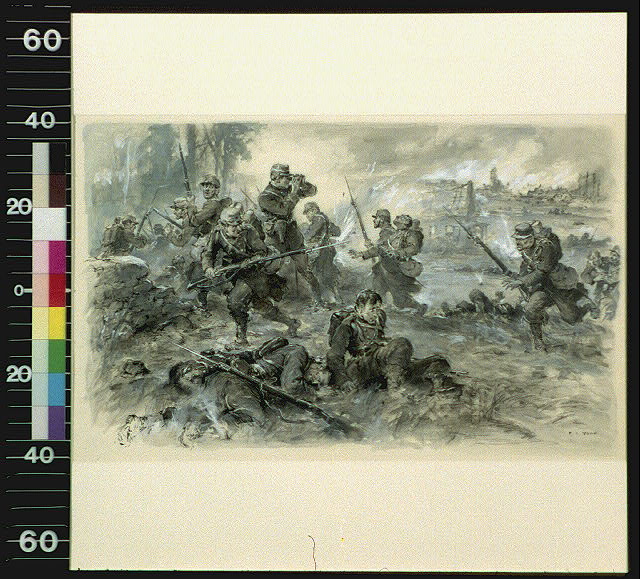
Lincoln Reshuffles Command
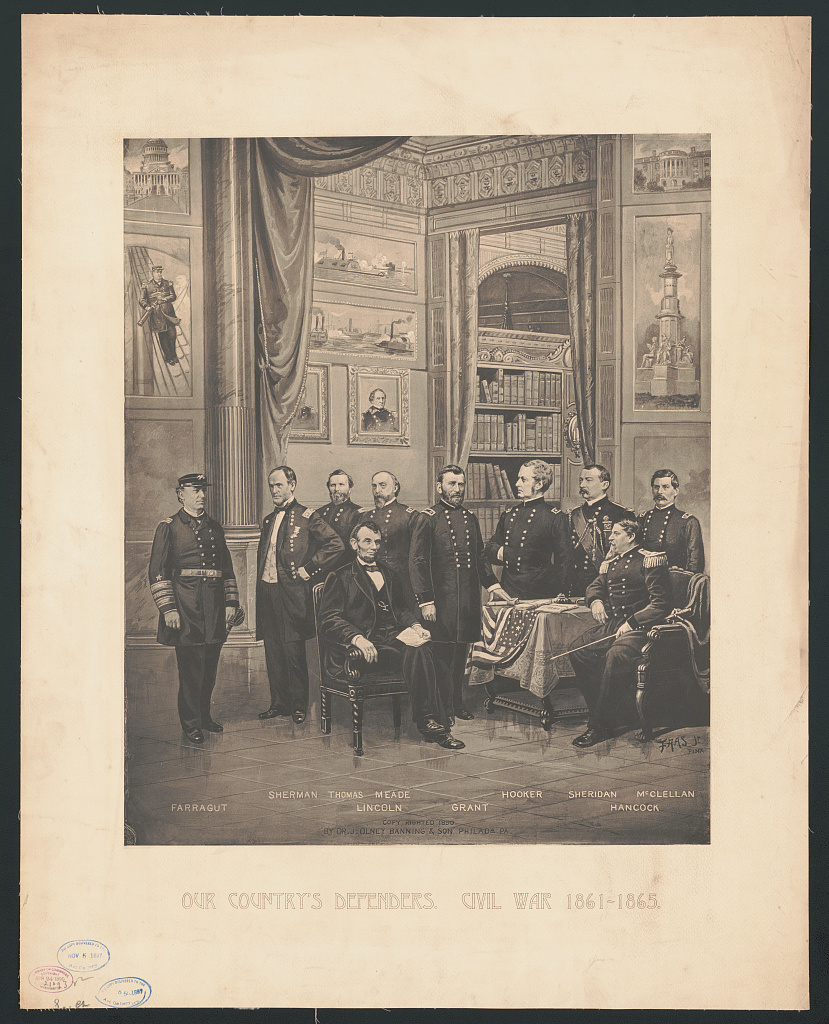
Following the Battle of Antietam, Lincoln lost patience with General George McClellan’s reluctance to pursue Lee’s retreating army. On November 7, he replaced McClellan with Major-General Ambrose Burnside. Burnside, known for his distinctive facial hair (giving rise to the term "sideburns"), reluctantly accepted the position. His aggressive, yet ultimately disastrous, leadership at the Battle of Fredericksburg would soon prove costly.
The Emancipation Proclamation
On New Year’s Day, President Lincoln officially issued the Emancipation Proclamation, declaring that all enslaved people in Confederate-controlled territories were to be “forever free.” While it did not immediately free a single enslaved person, it altered the nature of the war—turning it into a fight for human freedom. It also discouraged European nations from supporting the Confederacy and encouraged Black enlistment in the Union Army.
The First Conscription Act
Facing dwindling enlistments, Congress passed the First Conscription Act, making all men aged 20 to 45 eligible for the draft. However, the law allowed wealthy men to pay a $300 fee or hire a substitute to avoid service, leading to accusations that the war was being fought by the poor while the rich stayed home. These tensions would later erupt in the New York Draft Riots of July 1863.
The Battle of Chancellorsville
General Robert E. Lee achieved what is often considered his greatest victory at Chancellorsville, using daring tactics to defeat a much larger Union force led by General Joseph Hooker. However, the victory came at a devastating cost—Confederate General Stonewall Jackson was mortally wounded by friendly fire. His loss would be deeply felt during the upcoming Battle of Gettysburg.
The Siege of Vicksburg
Union General Ulysses S. Grant launched a relentless siege on Vicksburg, Mississippi, one of the last Confederate strongholds on the Mississippi River. After weeks of bombardment and starvation, the city surrendered on July 4, 1863. This victory gave the Union complete control of the Mississippi River, effectively splitting the Confederacy in two.
The Battle of Gettysburg
In the bloodiest battle of the Civil War, Union forces under General George Meade clashed with Lee’s Army of Northern Virginia in Gettysburg, Pennsylvania. After three days of fierce fighting, including Pickett’s Charge, Lee was forced to retreat. The defeat ended Confederate hopes of invading the North and securing foreign recognition. It was a turning point in the war.
The Gettysburg Address
Standing on the battlefield where thousands had perished, Lincoln delivered one of the most famous speeches in American history—the Gettysburg Address. In just 272 words, he reaffirmed the principles of democracy, stating that the war was a test of whether a government “of the people, by the people, for the people” could endure.
The Battle of Chattanooga
Union forces under Grant broke a Confederate siege of Chattanooga, Tennessee, securing a crucial railway hub. The victory opened the door for Sherman’s Atlanta Campaign, setting the stage for his infamous March to the Sea in 1864.
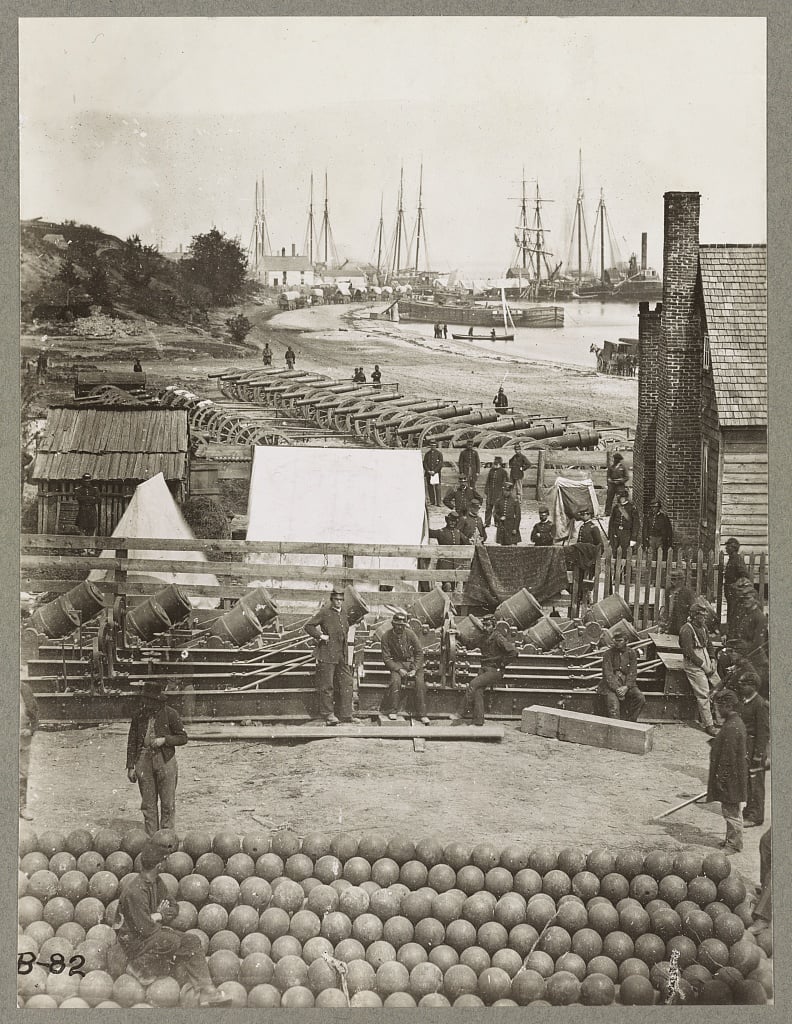
Grant’s Overland Campaign Begins
Now leading all Union armies, General Grant launched a relentless campaign against Lee in Virginia, engaging in brutal battles at The Wilderness, Spotsylvania, and Cold Harbor. Grant’s strategy of continuous engagement inflicted heavy losses on both sides, but Lee’s army was being depleted with no reinforcements in sight.
The Siege of Petersburg Begins
Grant shifted tactics and besieged Petersburg, a vital supply center for Richmond. The trench warfare that followed lasted nearly ten months, foreshadowing the brutal battles of World War I. The fall of Petersburg would eventually force Lee to abandon Richmond.
The Confederacy’s Last Attack on Washington
Confederate General Jubal Early led a daring raid on Washington, D.C., coming within five miles of the White House. However, Union reinforcements arrived just in time, forcing Early to retreat. This marked the last Confederate offensive in the Eastern Theater.
Sherman’s Atlanta Campaign & March to the Sea
After a series of battles, General Sherman captured Atlanta in September 1864, dealing a devastating blow to the Confederacy and ensuring Lincoln’s re-election. He then embarked on his infamous March to the Sea, carving a 300-mile path of destruction through Georgia, crippling the South’s war effort.
The Fall of Savannah and the Battle of Nashville
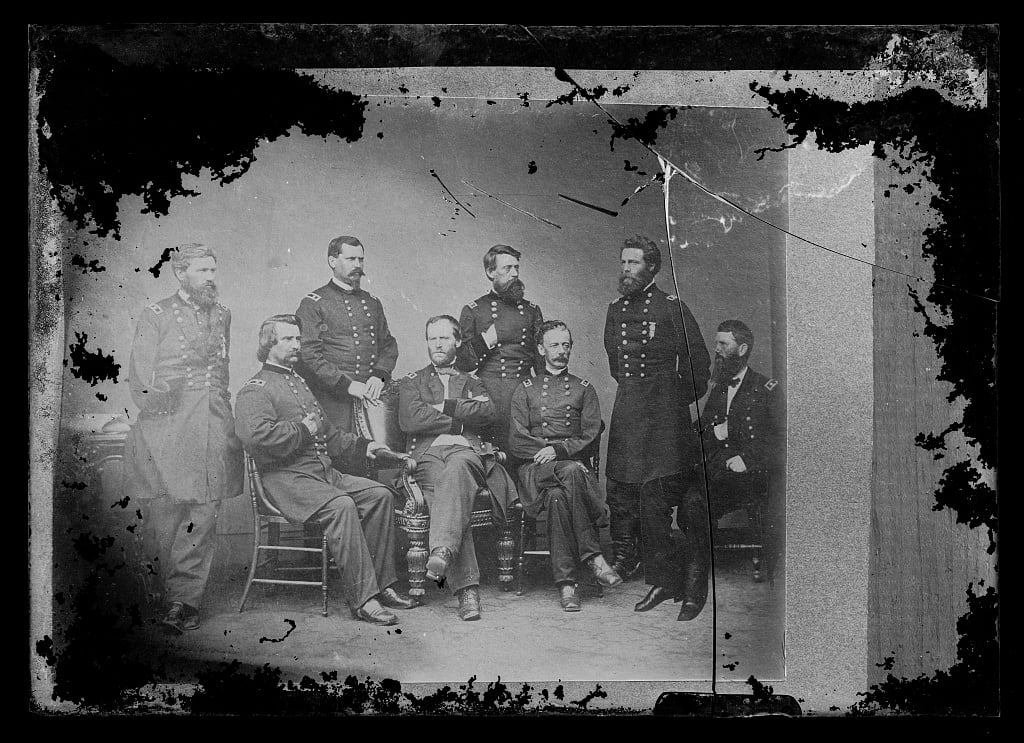
Sherman captured Savannah, Georgia, as a Christmas gift to Lincoln, while in Tennessee, Union General George Thomas crushed Confederate General John Bell Hood’s army at Nashville, effectively eliminating the Confederacy’s last major Western force.
The Confederacy on the Brink
The war’s final months saw Confederate morale crumble. Fort Fisher, the last major Confederate port, fell to Union forces in January 1865, cutting off vital supplies. Meanwhile, Confederate leaders, in a desperate move, approved the arming of enslaved men, but the war ended before it could be implemented.
The Fall of Richmond and Lee’s Surrender
After a final Union assault, Richmond fell on April 2, forcing the Confederate government to flee. Lee’s exhausted army, outnumbered and outmaneuvered, was surrounded at Appomattox Court House. On April 9, Lee met with Grant and surrendered, effectively ending the Civil War.
Lincoln’s Assassination
Just five days after Lee’s surrender, Abraham Lincoln was assassinated by actor and Confederate sympathizer John Wilkes Booth at Ford’s Theatre in Washington. His death plunged the nation into mourning and left Reconstruction in the hands of his controversial successor, Andrew Johnson.
The Capture of Jefferson Davis
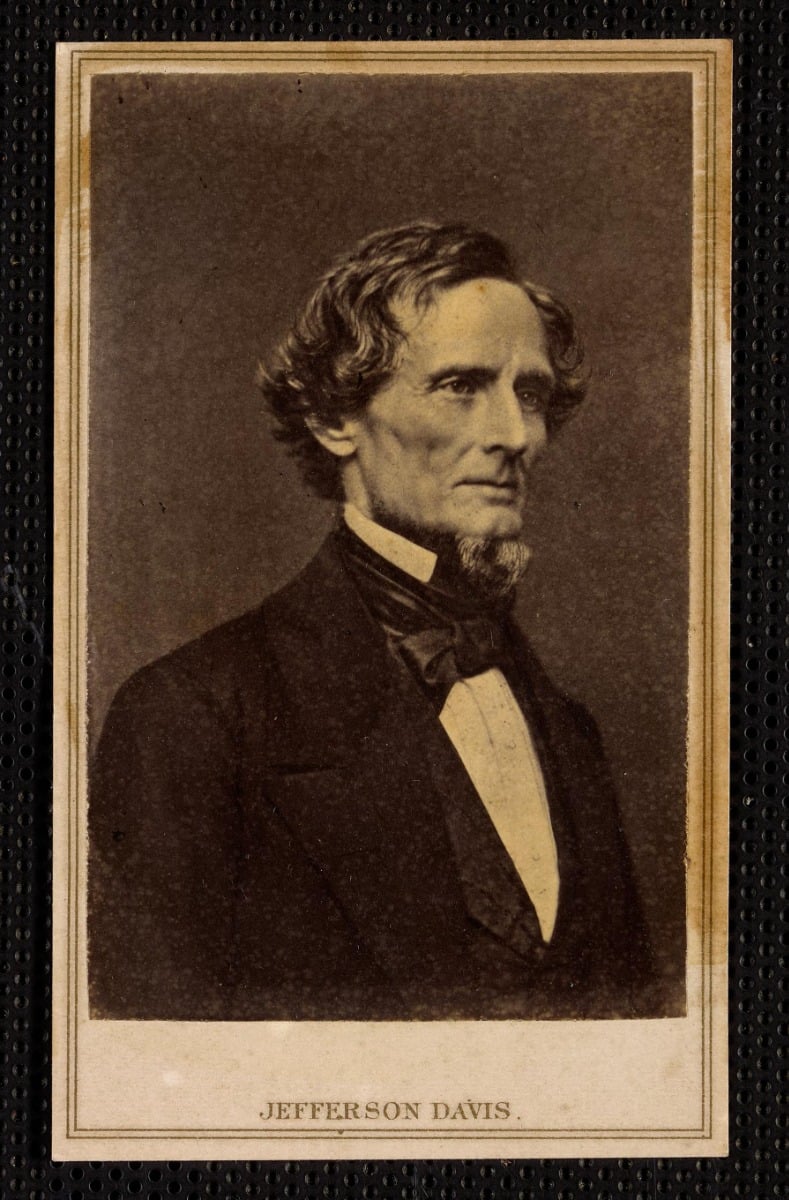
Confederate President Jefferson Davis was captured in Georgia while attempting to flee. His arrest marked the final collapse of the Confederacy. Though the war was officially over, the long and difficult process of Reconstruction was just beginning.
Abraham Lincoln wins the U.S. presidential election, sparking Southern concerns over slavery.
South Carolina becomes the first state to secede from the Union.
Mississippi, Alabama, Georgia, Louisiana, and Texas secede. Jefferson Davis is elected Confederate President.
The Civil War begins as Confederate forces fire upon Fort Sumter.
Many Virginians supported the Union, and as a result, Union-sympathizing West Virginia was formed.
Confederate victory at the First Battle of Bull Run shocks the Union.
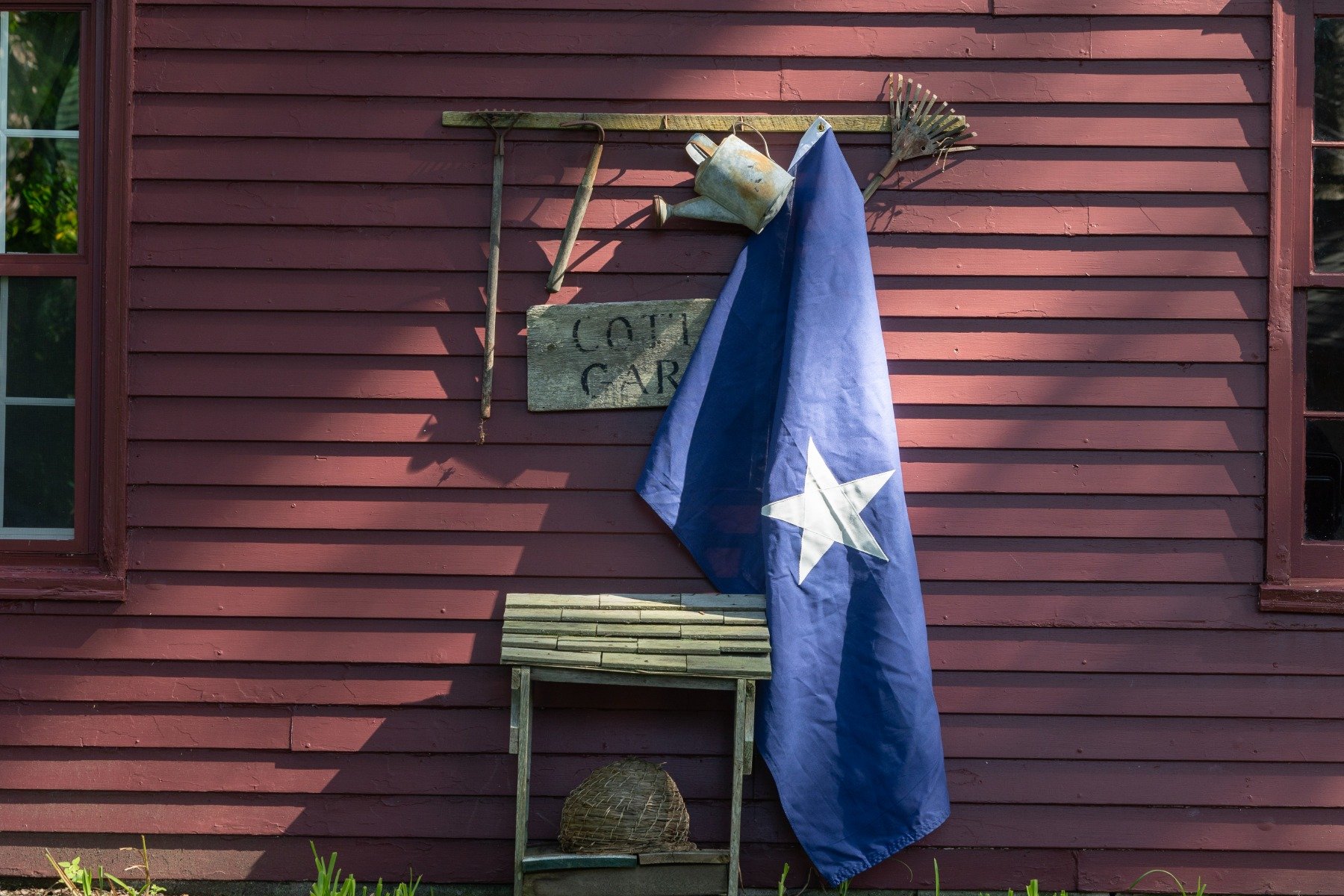
President Lincoln called for a unification of the Union Army to attack the Confederacy by both land and sea on February 22: George Washington's birthday. General McClellan, however, ignores the order.
Union General Ulysses S. Grant captures Fort Henry on the 6th, followed by Fort Donelson on the 16th.
In November 1861, Lincoln seized full control of the Union army amid McClellan's inaction, Union forces triumphed at Port Royal, and the historic clash between the ironclads Monitor and Merrimac signaled the end of wooden warships.
The Confederate army attacks Grant's unprepared Union army stationed in Shiloh on the Tennessee River by surprise. The Union army is victorious, proving Grant's strength as a leader.
17 Union ships led by Flag Officer David Farragut sail up the Mississippi River, capturing New Orleans- the South's most powerful port- in the process. General McClellan begins his Peninsular Campaign.
McClellan's Union forces occupied Yorktown but stalled awaiting reinforcements, while Stonewall Jackson’s swift maneuvers forced Union troops into a retreat across the Potomac toward Washington, D.C.
At the Battle of Seven Pines, a last-minute Union reinforcement secured victory, but the wounding of Confederate General Joseph E. Johnston led to Robert E. Lee taking command of the Army of Northern Virginia, marking a turning point in the war.
In the brutal Seven Days' Battle, Union and Confederate forces clashed across five engagements, culminating in a Confederate retreat at Malvern Hill, effectively ending McClellan’s Peninsular Campaign.
General McClellan is replaced by Major-General Henry Halleck as General-in-Chief of the Union Army.
Union General John Pope was defeated at the Second Battle of Bull Run, which lasted from August 29-30. The defeat, however, was blamed on General Fitz-John Porter, as he didn't bring his troops into battle soon enough.
General McClellan defeats General Robert E. Lee at both Crampton's Gap and South Mountain, but doesn't act quick enough to save Harper's Ferry.
The Battle of Antietam, the bloodiest single day in American history, forced Lee’s retreat, gave the Union a strategic advantage, and enabled Lincoln to issue the Emancipation Proclamation, shifting the war’s purpose and deterring European support for the Confederacy.
The Battle of Antietam, the bloodiest clash of the Civil War, forced Lee’s retreat to Virginia, deterred British and French recognition of the Confederacy, and paved the way for Lincoln’s Preliminary Emancipation Proclamation on September 22, 1862.
McClellan is replaced by Major-General Ambrose E. Burnside on November 7.
Abraham Lincoln issues the Emancipation Proclamation, declaring all slaves- even those in rebel states- free in the eyes of the federal government.
Due to Union recruitment problems, the First Conscription Act is passed, making all men between the ages of 25 and 45 liable to be recruited into the military. Recruitment could be avoided by paying a fee to the federal government, which was looked upon as unfair to the poor.
At the Battle of Chancellorsville, Lee’s bold strategy of dividing his army led to a surprise three-pronged attack, forcing Union General Hooker to retreat across the Rappahannock and securing a decisive Confederate victory.
General Grant’s victory at Vicksburg and the subsequent capture of Port Hudson secured Union control over the Mississippi River, splitting the Confederacy and marking a turning point in the war.
The Gettysburg Campaign wages, resulting in Union Victory. The Battle of Gettysburg was a serious defeat for the Confederate Army, also resulting in no hope of formal recognition by foreign governments.
Union and Confederate forces clash at the Battle of Chickamauga, with Union forces eventually retreating into Chattanooga.
Abraham Lincoln delivers the Gettysburg Address.
The Union's victory in the Battle of Chattanooga secured control over Tennessee, dealing a critical blow to the Confederacy and paving the way for Sherman’s Atlanta Campaign.
Fighting remains at a standstill during this period.
With General Grant now leading the Union army, he launched an unrelenting campaign against Lee in Virginia, clashing fiercely in the Wilderness and Spotsylvania battles, where Lee suffered heavy losses with no reinforcements.
The Battle of Cold Harbor dealt a devastating blow to Union forces, but Grant’s relentless assaults severely weakened Lee’s army, marking his final victory of the war.
Grant's successful siege of Petersburg crippled the Confederacy's supply lines, paving the way for the fall of Richmond and the war's final chapter.
General Jubal Early’s Confederate forces advanced within five miles of Washington, D.C., but were ultimately repelled by Union troops, marking the last Confederate threat to the capital.
General William T. Sherman's capture of Atlanta revitalized Northern morale and set the stage for his relentless March to the Sea.
General Sherman’s devastating March to the Sea left a 300-mile path of destruction, forcing Hood to abandon Atlanta, securing Union supply lines, and bolstering Northern confidence as Lincoln won re-election.
General Sherman captured Fort McAllister on December 13 and Savannah soon after, while Confederate General Hood's attempt to seize Nashville on December 15 ended in a decisive Union defeat.
Union General Alfred H. Terry’s capture of Fort Fisher shattered Confederate morale, leading to troop desertions, while Jefferson Davis’ desperate plan to arm slaves was approved but never enacted.
As General Sherman’s relentless march extended into South Carolina, leaving destruction in its wake, a desperate Jefferson Davis proposed peace under Confederate independence, but Lincoln firmly rejected the offer.
After failed attacks on Grant’s forces in late March and early April, General Lee evacuated Richmond on April 2, retreating north in a final attempt to escape Union pursuit.
Surrounded and outnumbered, General Lee surrendered to Grant at Appomattox Courthouse, marking the effective end of the Civil War.
Abraham Lincoln was assassinated by actor John Wilkes Booth, a Confederate sympathizer seeking revenge for the South’s defeat.
Confederate President Jefferson Davis is captured in Georgia, officially bringing the Confederacy to its final collapse.
It Doesn't End Here
If you feel like that 4 year period went by pretty quick, consider reading more about the civil war or other American history topics before getting your favorite flags for yourself!
When you're ready, our team can help you create your own custom flag or get you one of our thousands of stock items, including hundreds of historical flags throughout time! You can call us at 1-888-697-3524 or send us a message, and we will get back to you as soon as possible!